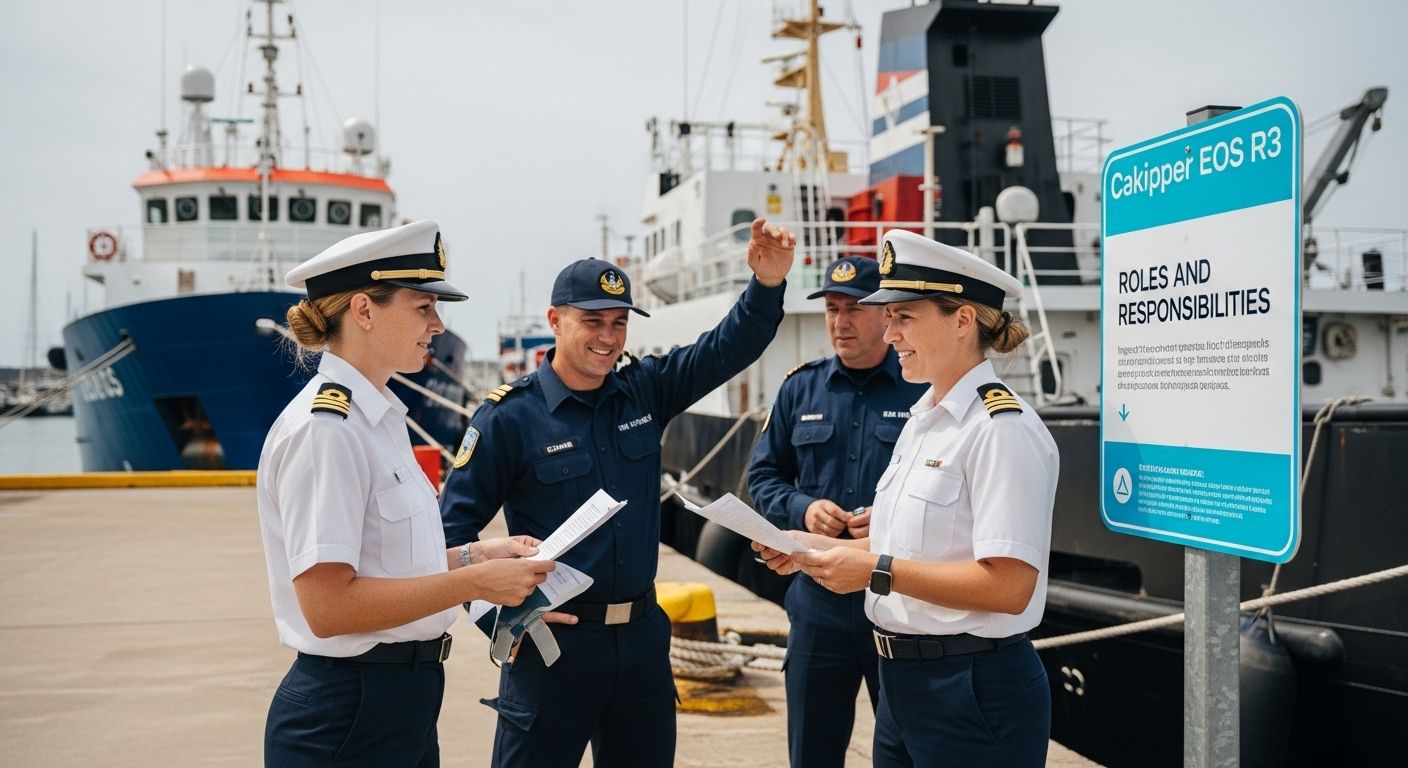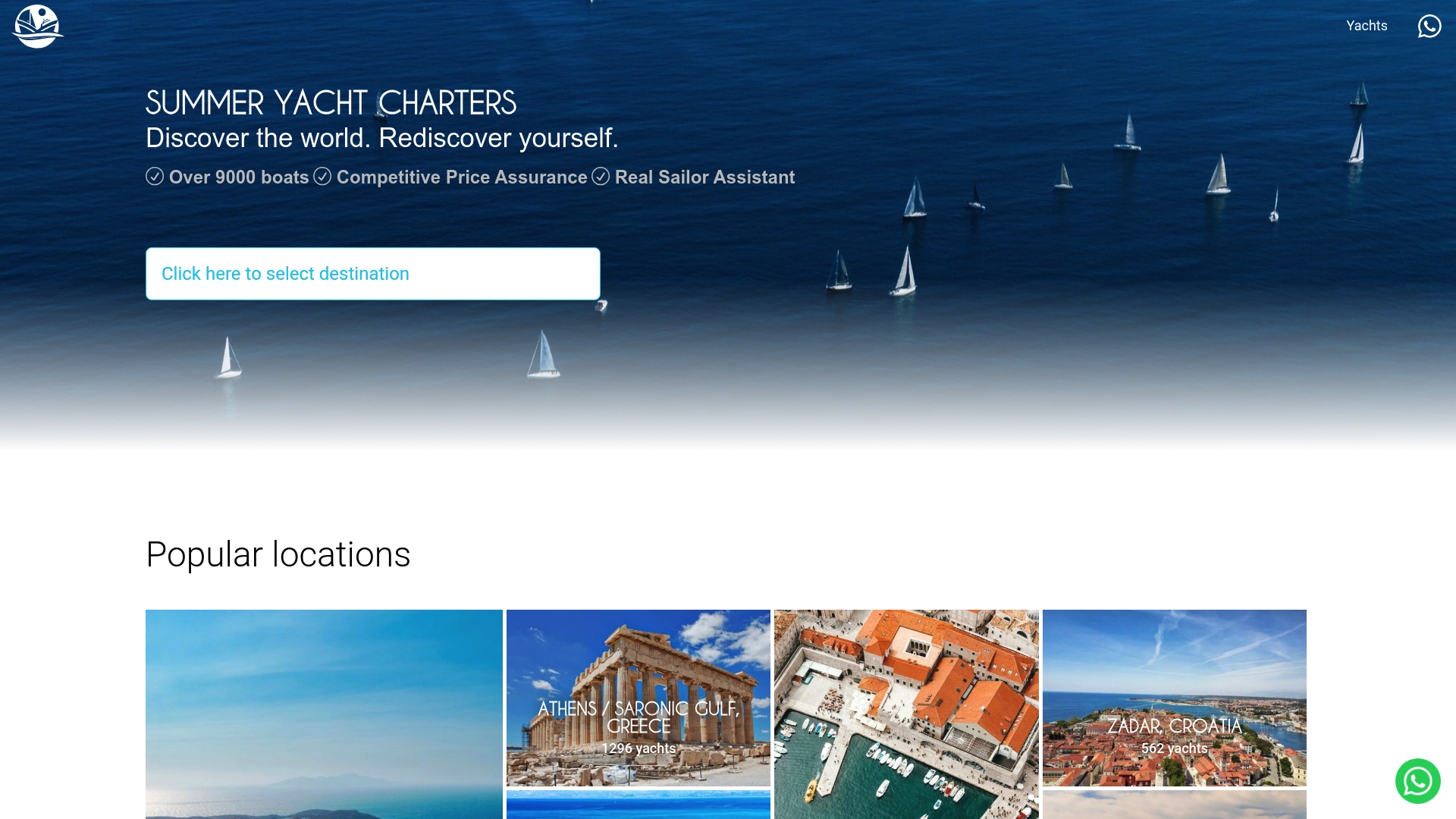Understanding the Difference Between Skipper and Captain
Explore the difference between skipper and captain, delving into roles, responsibilities, and how these positions operate in the sailing world.

Most people think a skipper and a captain are the same thing. They both steer ships, shout commands, and wear the iconic hat, right? Not quite. Captains hold legal authority that covers every single aspect of a vessel’s operation, while skippers often have a much more focused, hands-on role. The difference could mean the safety of an entire crew—or simply who holds the pen when signing official maritime documents. Surprised? Wait until you see just how deep this professional divide really goes.
Table of Contents
- Defining Skipper: Roles And Responsibilities
- Defining Captain: Roles And Responsibilities
- Key Differences: Authority And Decision-Making
- Practical Implications: When To Use Each Term
- Real-World Context: Skipper Vs Captain In Various Sailing Scenarios
Quick Summary
| Takeaway | Explanation |
|---|---|
| Skippers handle operational tasks | Skippers focus on navigation, safety, and vessel maintenance, ensuring efficient maritime operations. |
| Captains hold broader leadership roles | Captains are responsible for all aspects of maritime operations, including legal compliance and crew management. |
| Different contexts dictate terminology | ‘Captain’ is used in commercial shipping, while ‘Skipper’ is common in recreational sailing. |
| Certifications are essential for both roles | Both skippers and captains must have specific training and licenses to legally operate vessels. |
| Understanding roles enhances communication | Knowing the distinctions between skippers and captains improves clarity and respect in maritime contexts. |
Defining Skipper: Roles and Responsibilities
A skipper represents the primary operational leader responsible for managing a vessel during maritime journeys, wielding significant authority and accountability for the safety and performance of the entire crew and boat. Unlike casual perceptions, a skipper’s role extends far beyond simple navigation, encompassing complex operational, strategic, and administrative responsibilities.
Core Operational Responsibilities
The skipper serves as the vessel’s ultimate decision maker, handling critical tasks that ensure safe and efficient maritime operations. Key responsibilities include:
- Navigation and Route Planning: Determining optimal sailing routes, considering weather conditions, maritime regulations, and vessel capabilities.
- Safety Management: Implementing comprehensive safety protocols, conducting risk assessments, and maintaining emergency preparedness.
- Technical Vessel Oversight: Performing regular equipment checks, managing maintenance requirements, and ensuring all systems function correctly.
Skippers must possess an intricate understanding of maritime navigation techniques, vessel mechanics, and local maritime regulations. Their expertise allows them to make split-second decisions that can prevent potential maritime accidents or challenges.
Legal and Professional Qualifications
To operate as a professional skipper, individuals must typically obtain specific maritime certifications and licenses. According to Maritime Training Academy, these qualifications often include:
- Demonstrated sailing experience
- Recognized maritime navigation certifications
- First aid and emergency response training
- Vessel-specific operational licenses
These requirements ensure that skippers maintain a high standard of professional competence and can effectively manage complex maritime environments.
If you want to dive deeper into understanding the comprehensive role of a skipper, check out our detailed guide on sailing leadership.
While a skipper’s responsibilities might seem overwhelming, their role is fundamentally about creating a safe, efficient, and enjoyable maritime experience for everyone aboard.

Defining Captain: Roles and Responsibilities
A ship’s captain represents the highest-ranking maritime professional with comprehensive legal and operational authority over an entire vessel. Unlike a skipper who manages specific sailing aspects, a captain holds ultimate responsibility for every maritime operation, personnel management, and strategic decision making.
Comprehensive Maritime Leadership
Captains function as supreme commanders who bear complete accountability for a vessel’s performance, safety, and legal compliance. Their multifaceted responsibilities transcend traditional navigation tasks and encompass complex administrative, strategic, and interpersonal management roles.
Key leadership responsibilities include:
- Strategic Navigation: Determining comprehensive maritime routes, analyzing complex navigational challenges, and making critical operational decisions.
- Regulatory Compliance: Ensuring strict adherence to international maritime laws, safety protocols, and governmental shipping regulations.
- Personnel Management: Supervising entire crew operations, managing interpersonal dynamics, and maintaining professional standards aboard.
Professional Qualifications and Legal Authority
To serve as a professional captain, individuals must acquire extensive maritime credentials and demonstrate exceptional leadership capabilities. According to the International Maritime Organization, captains must typically possess:
- Advanced maritime navigation certifications
- Comprehensive vessel management credentials
- Extensive professional sailing experience
- Advanced emergency response and crisis management training
Captains hold legal authority to make independent decisions during maritime operations, including emergency interventions, crew management, and vessel protection. Their professional judgment can directly impact the safety of crew members, passengers, and maritime assets.
Note: While captains and skippers share maritime operational responsibilities, captains maintain a significantly broader scope of authority and accountability. Learn more about maritime leadership roles to understand these nuanced professional distinctions.
Ultimately, a captain’s role represents a sophisticated blend of technical expertise, leadership skills, and profound responsibility for ensuring safe and efficient maritime operations.
Key Differences: Authority and Decision-Making
While skippers and captains both play critical maritime leadership roles, their authority and decision-making capabilities demonstrate significant functional variations that fundamentally shape vessel operations and management approaches.
Scope of Decision-Making Authority
The primary distinction between skippers and captains lies in the breadth and depth of their operational decision-making powers. Captains possess comprehensive, legally sanctioned authority that extends across all vessel domains, whereas skippers typically maintain more focused, task-specific decision-making responsibilities.
Key differences in decision-making authority include:
- Legal Jurisdiction: Captains have formal legal empowerment to make binding decisions affecting vessel operations, crew management, and emergency protocols.
- Operational Autonomy: Captains can independently determine strategic navigation changes, while skippers often require higher-level consultation or approval.
- Organizational Hierarchy: Captains represent the ultimate maritime leadership role, with direct accountability to maritime regulatory bodies and vessel owners.

Risk Management and Accountability
Risk management approaches fundamentally differ between skippers and captains. According to The Maritime Safety Research Centre, captains bear comprehensive liability for vessel-wide safety and operational performance, whereas skippers focus on more immediate, tactical risk mitigation strategies.
Captains must consider broader contextual factors when making decisions, including:
- Long-term vessel and crew safety implications
- Complex regulatory compliance requirements
- Potential economic and strategic consequences of maritime operations
Professional Intervention Capabilities
Captains possess broader intervention powers that enable them to address complex maritime challenges beyond immediate sailing requirements. This includes legal authority to:
- Implement emergency protocols
- Modify vessel course in response to unforeseen circumstances
- Make critical personnel management decisions
Explore more about maritime leadership dynamics to understand these nuanced professional distinctions.
Understanding these authority differences is crucial for comprehending the sophisticated maritime leadership ecosystem and the complementary roles that skippers and captains play in ensuring safe, efficient maritime operations.
To help clarify the crucial distinctions between the roles of skipper and captain, the following table compares their core responsibilities, qualifications, and areas of authority as described in the article.
| Aspect | Skipper | Captain |
|---|---|---|
| Scope of Responsibility | Operational management of vessel and crew | Full legal, strategic, and operational command |
| Legal Authority | Focused, typically on specific sailing tasks | Comprehensive and formally recognised legal powers |
| Qualifications | Recognised navigation certificates, first aid, experience | Advanced maritime certifications, extensive leadership |
| Decision-Making | Task and situation-specific | Strategic, vessel-wide, independent |
| Typical Use Context | Recreational sailing, smaller vessels | Commercial shipping, military, large passenger ships |
| Personnel Management | Direct crew interaction for operational purposes | Complete crew supervision and training |
| Regulatory Compliance | Localised to vessel and immediate regulations | Adherence to national and international maritime law |
Practical Implications: When to Use Each Term
Navigating the subtle distinctions between skipper and captain terminology requires understanding contextual nuances, professional settings, and specific maritime environments. Selecting the appropriate term goes beyond mere semantics and reflects precise professional roles and responsibilities.
Contextual Usage in Maritime Environments
Professional terminology varies significantly depending on vessel type, operational context, and legal frameworks. Different maritime sectors employ these terms with remarkable precision, each carrying distinct connotations of authority and expertise.
Key contextual considerations include:
- Commercial Shipping: Typically uses “Captain” as the formal, legally recognized title
- Recreational Sailing: Often employs “Skipper” for operational leadership
- Military Maritime Operations: Strictly uses “Captain” as a rank and operational title
Professional Licensing and Formal Recognition
According to the United States Coast Guard Maritime Documentation, the term selection depends on specific professional credentials and vessel operational parameters. Formal licensing directly influences terminology usage.
Professional credentials that determine term selection include:
- Vessel size and passenger capacity
- Operational jurisdiction (inland, coastal, international waters)
- Specific maritime certification levels
Practical Communication Strategies
Effective maritime communication requires understanding contextual appropriateness. While technical differences exist, practical usage often depends on specific interaction dynamics and professional respect.
Recommended communication approaches:
- Use “Captain” in formal, official maritime documentation
- Employ “Skipper” in casual, professional sailing conversations
- Defer to an individual’s preferred professional title
Learn more about maritime professional terminology to refine your understanding of these nuanced distinctions.
Mastering these subtle terminological variations demonstrates professional awareness and respect within maritime communities, ensuring clear and precise communication across different sailing contexts.
The chart below summarises how the terms “skipper” and “captain” are used across various maritime contexts, helping readers understand the most appropriate and professionally recognised usage of each term.
| Maritime Setting | Preferred Term | Typical Vessel Type | Role Focus |
|---|---|---|---|
| Commercial Shipping | Captain | Cargo ships, oil tankers | Overall vessel command and compliance |
| Recreational Sailing | Skipper | Yachts, sailboats, pleasure craft | Operational leadership, navigation |
| Military Naval Operations | Captain | Warships, naval vessels | Commanding officer, strict hierarchy |
| Fishing Vessels | Skipper | Commercial fishing boats | Operational, trip management |
| Cruise Liners | Captain | Large passenger ships | Strategic command and oversight |
| Yacht Charter (bareboat/crewed) | Skipper/Captain | Charter yachts | Varies by charter type and service |
| Competitive Sailing | Skipper | Race yachts, dinghies | Team leadership during competition |
Real-World Context: Skipper vs Captain in Various Sailing Scenarios
Sailing environments present diverse scenarios where the roles of skippers and captains manifest distinctly, highlighting the nuanced professional dynamics that define maritime leadership and operational responsibilities.
Recreational Sailing Scenarios
Recreational maritime contexts typically demonstrate the most fluid interpretation of skipper and captain roles. In smaller vessels like sailboats, yachts, and pleasure craft, the term “skipper” predominantly describes the primary operational leader responsible for vessel management.
Typical recreational sailing scenarios include:
- Private Yacht Charters: Skipper manages day-to-day sailing operations
- Weekend Sailing Expeditions: Individual with most maritime experience assumes leadership
- Sailing School Training: Instructors often referred to as “skippers” during educational voyages
Commercial Maritime Operations
In commercial maritime environments, professional hierarchies become more structured, with clear distinctions between skipper and captain roles. According to Maritime Professional Standards Institute, different vessel types require specific leadership configurations.
Commercial maritime leadership variations include:
- Merchant Shipping: Formal “Captain” title with comprehensive legal responsibilities
- Fishing Vessels: “Skipper” manages operational aspects
- Cruise Liners: Multilayered leadership with primary “Captain” and specialized operational leaders
Specialized Maritime Domains
Unique maritime sectors present intricate variations in leadership terminology and operational frameworks. Professional roles adapt based on specific environmental and operational requirements.
Specialized maritime domains demonstrate distinctive leadership approaches:
- Research Vessels: Scientific expedition leaders often called “Chief Scientist” or “Skipper”
- Competitive Sailing: Team leaders referred to as “Skippers” during racing events
- Military Naval Operations: Strict hierarchical “Captain” designation with comprehensive command authority
Explore advanced maritime leadership roles to understand these intricate professional distinctions.
Understanding these contextual nuances helps maritime professionals and enthusiasts navigate the sophisticated landscape of sailing leadership, recognizing that terminology reflects both legal frameworks and operational realities.
Ready to Sail with Confidence?
Understanding whether you need a skipper or a captain for your next adventure is a common challenge, especially if you want a safe and unforgettable journey. The article highlighted the different roles, legal responsibilities, and types of vessels where these maritime professionals operate. Many travellers worry about making the right choice for their group and level of experience. This decision can affect your peace of mind, your safety, and your overall holiday experience.

At Summer Yacht Charters, we take away the guesswork by letting you filter options for both bareboat and crewed charters. Book a yacht where you captain the adventure yourself or enjoy the guidance of an experienced skipper.
• Browse our user-friendly platform and select your ideal destination, vessel type, and level of support.
• Whether you are an experienced sailor seeking independence or a newcomer craving peace of mind, we tailor every detail to your needs.
If you want to explore the advantages of each approach further, read our in-depth guide to what a skipper does and when to choose one.
Book your next yacht holiday today at Summer Yacht Charters and turn your insights into the perfect sailing escape while premium vessels are still available for your preferred dates.
Frequently Asked Questions
What is the primary role of a skipper?
A skipper is primarily responsible for managing a vessel during maritime journeys, overseeing navigation, safety management, and technical vessel oversight to ensure safe and efficient operations.
How does the role of a captain differ from that of a skipper?
A captain holds the highest authority on a vessel, with comprehensive legal and operational responsibilities, including strategic navigation and personnel management. In contrast, a skipper typically focuses on specific sailing tasks and operational leadership, often on smaller vessels.
What qualifications are needed to become a captain?
To become a captain, one must obtain advanced maritime navigation certifications, extensive sailing experience, and credentials specific to vessel management. Training in emergency response and crisis management is also essential.
In what contexts are the terms ‘skipper’ and ‘captain’ used?
The term ‘captain’ is commonly used in commercial shipping and military operations, while ‘skipper’ is often applied in recreational sailing contexts. The distinction reflects different professional responsibilities and vessel sizes.
Recommended
- What Does a Skipper Do? Guide for Sailors & Travellers – Summer Yacht Charters
- What Is a Yacht Charter? Essential Guide for 2025 – Summer Yacht Charters
- Skipper or Full Crew? How to Choose the Best Charter Experience – Summer Yacht Charters
- What Is a Yacht Broker? Roles, Benefits, and Choosing Wisely – Summer Yacht Charters